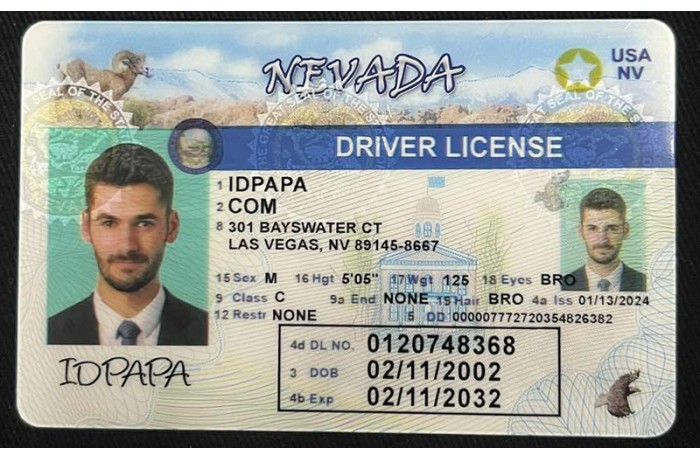The realm of digital identity is in a constant state of flux, driven by rapid technological advancements and evolving user demands. Consumers are increasingly seeking greater control over their online information, while companies are adapting their strategies to meet these changing needs. This creates a dynamic stage where creativity is paramount.
Keeping up-to-date of these trends is crucial for both users and organizations to thrive in the digital age. Key developments include the increase of decentralized identity solutions, the integration of artificial intelligence with identity management systems, and the expanding importance Technology against ID fraud of data privacy and security.
- Distributed Ledger Technology
- Zero-Knowledge Proofs
- Facial Recognition
Combatting this Rise of ID Fraud: Strategies for a Secure Future
In today's increasingly digital landscape, identity theft poses a significant threat to individuals and organizations alike. With sophisticated cybercriminals constantly evolving their tactics, combating the rise of ID fraud requires a multi-faceted approach. Comprehensive security measures are crucial to protect sensitive personal information. Implementing strong authentication protocols, such as multi-factor authorization, can help prevent unauthorized access to accounts. Additionally, raising public awareness about the dangers of ID fraud is paramount. Individuals should be equipped with the knowledge and tools to safeguard their identities. Promoting data security best practices, including using strong passwords and being cautious about phishing scams, can mitigate the risk of becoming a victim.
- Moreover, collaboration between government agencies, financial institutions, and technology companies is essential to effectively combat ID fraud.
- Sharing information about emerging threats and implementing industry-wide security standards can strengthen the overall defense against cybercriminals.
By implementing these strategies, we can work towards a more secure future where individuals' identities are protected from detrimental exploitation.
Strengthening copyright Laws in the Digital Age
As technology rapidly evolves, so too should our legal frameworks. The rise of advanced digital tools has created untapped challenges for combating the creation of fake identification documents. Established laws, often crafted in a pre-digital era, lack adequate in addressing these contemporary threats. Lawmakers must partner with experts to formulate cutting-edge solutions that can efficiently counteract this growing problem.
It is crucial to confirm that our legal structures remain relevant in the face of these evolving technological advancements. Through strengthening copyright laws and embracing innovative approaches, we can effectively protect the integrity of our identities.
Strengthening Digital Defenses with Biometric Authentication
In our increasingly digital world, safeguarding digital assets has become paramount. Traditional authentication methods, such as passwords and PINs, are increasingly vulnerable to cyberattacks. Biometric security emerges as a robust solution, leveraging unique behavioral traits to verify identities and mitigate the risk of unauthorized access. By employing technologies like fingerprint scanning, facial recognition, or iris authentication, biometric systems provide a higher level of defenses. These methods are inherently difficult to imitate, making it significantly harder for hackers to compromise accounts and steal sensitive information.
Biometric security offers benefits that extend beyond enhanced defense. Streamlined authentication processes eliminate the need for users to remember complex passwords, reducing inconvenience. Moreover, biometric systems can rapidly verify identities, accelerating access to applications and services.
- Additionally, biometric security is continuously evolving with advancements in machine learning and artificial intelligence, further strengthening its ability to identify suspicious activities.
- Despite these benefits, it's crucial to address potential challenges associated with biometric data, such as privacy violations and the potential for misuse.
- Consequently, implementing robust security measures, such as access controls, is essential to mitigate these risks and ensure the responsible use of biometric technology.
Emerging Authentication Trends: Striking a Balance Between Ease of Use and Robust Security via Digital IDs
As technology rapidly evolves, authentication/verification/access control methods are constantly undergoing transformation. Digital identities, offering a secure/robust/comprehensive and streamlined/efficient/seamless approach to verifying user credentials, are poised to revolutionize the way we authenticate/identify/validate ourselves in the digital realm. However, striking a balance between convenience/user-friendliness/ease of access and security/protection/safeguarding sensitive information remains paramount.
Implementing digital IDs/electronic identities/online credentials effectively requires careful consideration of various factors, including user acceptance/adoption/engagement, technological infrastructure, and regulatory frameworks. Ensuring that digital identity systems are transparent/accountable/auditable while also remaining user-centric/privacy-focused/data-protected will be crucial for building public trust and fostering widespread implementation/integration/deployment.
- Furthermore/Additionally/Moreover, addressing the potential for fraud/identity theft/cybersecurity threats in digital identity systems is essential. Robust security measures/protective protocols/defense mechanisms must be incorporated to mitigate/prevent/counteract such risks and ensure the integrity of digital identities.
- Ultimately/Concurrently/In essence, the future of authentication lies in embracing a holistic approach that combines the benefits/advantages/opportunities of digital IDs with stringent security protocols. By striking this delicate balance, we can pave the way for a more secure/reliable/trustworthy and convenient/accessible/user-friendly digital world.
Digital Identity Protection: A Multi-Layered Approach to Combating Fraud
In today's cyber landscape, safeguarding your identity has never been more essential. Fraudulent schemes are becoming increasingly advanced, posing a grave threat to individuals and organizations alike. To effectively combat these risks, a multi-layered approach to digital identity protection is necessary.
This approach involves implementing a range of techniques at different levels, from individual training to robust defensive systems. Firstly, it's essential to establish strong passwords, enable multi-factor authentication, and continuously update your software. Additionally, be wary of phishing scams and other social engineering tactics.
Furthermore, organizations must invest in advanced security technologies to screen potential threats and secure sensitive data. This includes implementing intrusion detection systems, firewalls, and encryption protocols. By adopting a holistic and multi-layered approach, we can create a more secure digital environment for everyone.

Comments on “Exploring the Changing Landscape of Online Identity Developments”